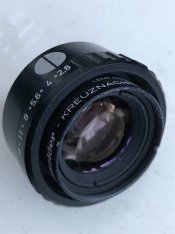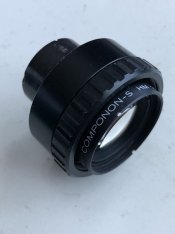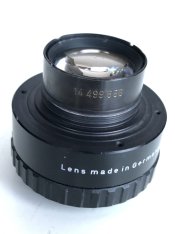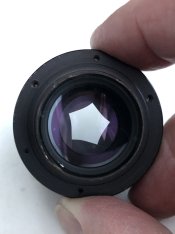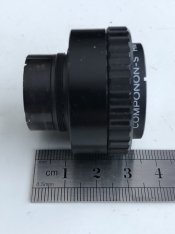Patrick Robert James
Member
- Joined
- Jul 31, 2012
- Messages
- 3,367
- Format
- 35mm RF
Correction; it’s the S-Biogon that only works on diffusion enlargers. That’s in part because it’s a wide angle and also because it needs a 50mm mount which is impossible on my Leitz enlargers. The 60mm is fiddly with extension rings on the Focomat Ic and having to raise the head on the column for most printing. I have both new and old versions of the Nikon 50/2.8 and find the new one mediocre whilst the old one is sharper across the frame. As for the Componon-S 5 element it was one of the first lenses I used back in university days and it was paired with a Phillips enlarger. An excellent combo and preferred to the V35 by pro printers on Fleet Street I knew then.
Eventually I will thin out my collection but when you can pick up treasures for the price of one or two rolls of film why not keep them until you’re bored?
Yeah, why not? I have had the same general idea with enlarging lenses. I pick them up cheap for kicks which is how I got the Orthoplanar. Of course Orthoplanars are no longer cheap. I stumbled over mine more than 20 years ago for a song. Had no idea what it was and back then the Zeiss Historical society didn't either. The internet changed all that.
Mine has a custom machined brass adapter/mount on it that a retired machinist volunteered to make for me. I guess he was bored. The lens with the adapter on it weighs a lot. I used to use it all the time back when my only enlarger was a medium format Saunders/LPL. Since moving up to a 4x5 Saunders, I barely use it. I have put it on the Focomat but focusing is a pain when you are used to not doing it, and at small sizes it doesn't really matter. For the highest quality print from 35mm, the Saunders 4x5 with the O-Pl and the 35mm mixing box is the tops. Beats the Focomat. Incredible image quality.
The Nikkor I have is a good one. Pretty much mint when I got it for cheap of course. I like using it because it really brings out the grain. That changes all the time though. Sometimes I put another lens on the Focomat just for the heck of it. Lenses don't really mean that much in the end. You can only tell if a direct comparison is made of the same image. Who does that? Not me.
I am like you too these days. I mainly want to get rid of stuff. I might even sell the Focomat and Minox enlargers I have. The Saunders does it all and does it very well indeed.
The days of Agfa, yes those were the days! Too bad that all is gone. I get nostalgic thinking about it.








